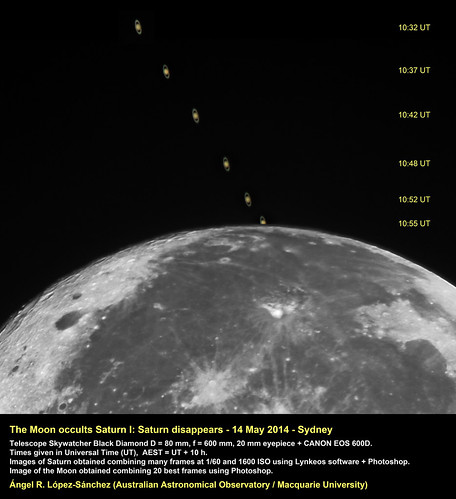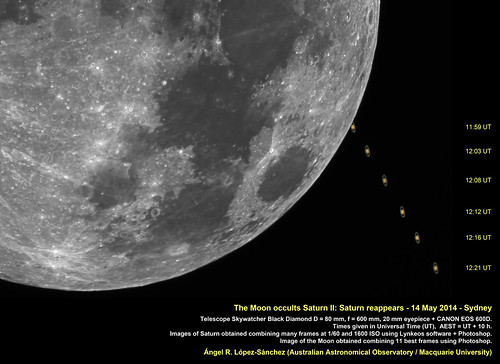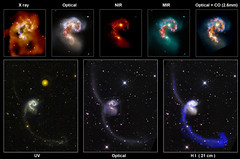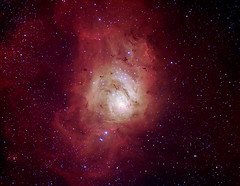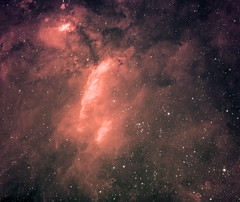Something that really shocked me when I started to live in Australia ~7 years ago was to hear everywhere that seasons start at the beginning of the corresponding month. That is, as today is Sep 1st, everyone in the radio / advertisements / news is welcoming Spring. And this, being an astronomer, believe me, hurts. Why? Because astronomically we are still in winter. Seasons are defined by Astronomy in a very accurate and precise way. This year Spring starts on September 23rd, 11:29 AEST (02:29 Universal Time). That is when that the Autumn Equinox happens, and the real moment Spring starts in the Southern Hemisphere (and Autumn/Fall starts in the Northern Hemisphere).
The seasons are caused by the combination of three astronomical factors: the Earth’s is a (almost perfect) sphere, the Earth’s orbit around the Sun, and the Earth’s axial tilt. As a consequence of these the Earth’s atmosphere is unequally heated by the Sun around the year at a given position. Therefore, the seasons are marked by the movement of the Earth around the Sun and, hence, which way the Earth is tilted with respect to the Sun. When the South hemisphere is tilted towards the Sun, the Sun’s rays strike the Earth at a steeper angle compared to a similar latitude in the North hemisphere. As a result, the radiation is distributed over an area which is less in the South hemisphere than in the North hemisphere. This means that there is more radiation per area to be absorbed in the South hemisphere, and therefore it is winter in the North hemisphere and summer in the South hemisphere.

Illumination of Earth by Sun at the southern solstice. Credit: Wikipedia
By astronomical definition, the precise timing of the seasons is determined by
the exact times of transit of the Sun over the tropics of Cancer and Capricorn for the solstices and the times of the Sun’s transit over the Equator for the equinoxes, as specified in this figure:

Movement of the Earth around the Sun following an orbital ellipse (with eccentricity exaggerated for effect) and seasons. Equinoxes (20 or 21st March and 22nd or 23rd September) happen when the tilt of Earth’s axis neither inclines away from nor towards the Sun (green dotted line), and hence two points a the same latitude but a different hemispheres receive the same amount of energy from the Sun. In an equinox, the Sun is found at the zenith at the midday at the Equator. A solstice (20th or 21st June and 21st or 22nd December) happens when the tilt of the Earth’s axis has maximum effect (23.44º, red dotted line). At the June solstice the Sun is found at the zenith at the midday (just over our head!) at latitude 23.44º North, defining the Tropic of Cancer. Similarly at the December solstice this happens at 23.44º South, known as the Tropic of Capricorn. The periapsis (perihelion) and the apoapsis (aphelion) mark the nearest and the farthest points from the Sun, respectively (blue dotted line). Credit: Wikipedia
Therefore, in the South hemisphere,
Spring starts with the Autumn Equinox, Summer with the Winter Solstice, Autumn with the Spring Equinox and Winter with the Summer Solstice. Of course, the names were given as correct for the North hemisphere.
Well, at least all of this is what Astronomy says. However, Governments and societies quite often decide to use their own definitions. Just checking this webpage of the Australian Bureau of Meteorology:
In Australia, the seasons are defined by grouping the calendar months in the following way:
1. Spring – the three transition months September, October and November.
2. Summer – the three hottest months December, January and February.
3. Autumn – the transition months March, April and May.
4. Winter – the three coldest months June, July and August.
These definitions reflect the lag in heating and cooling as the sun appears to move southward and northward across the equator. They are also useful for compiling and presenting climate-based statistics on time scales such as months and seasons.
Following these assumptions, Australia indeed enters in Spring today, which is funny because the majority of the countries (if not all) of the North hemisphere are still in Summer. In any case, for me it is Winter, and it will be winter till next on September 23rd, 11:29 AEST, when Spring, according to Astronomy, really starts.






